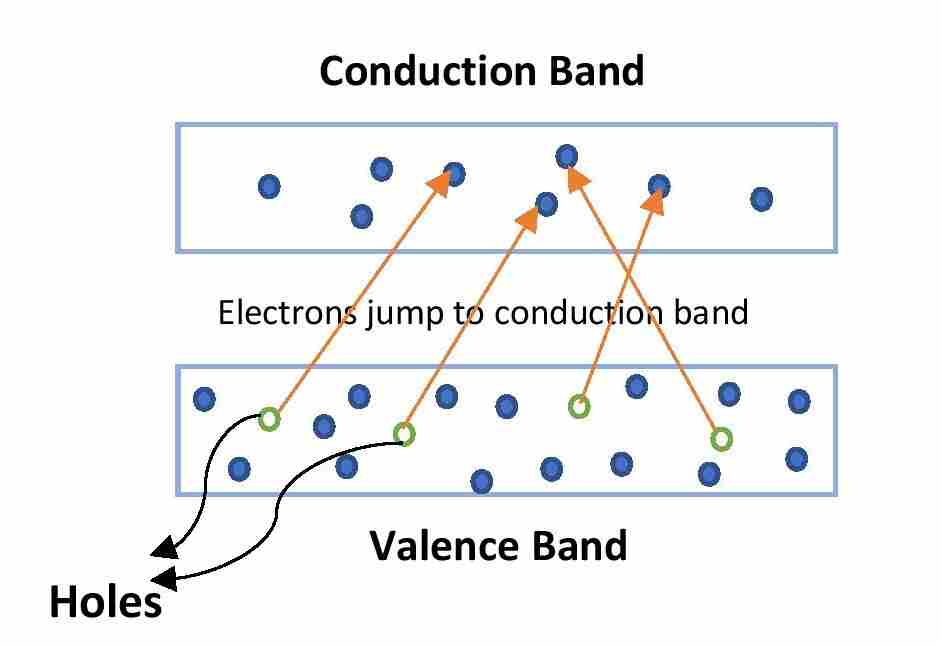A semiconductor has two types of charge carriers – free electrons and holes. The motion of electrons in a conductor is well-known to us. One can expect almost a similar motion of electrons in a semiconductor too. But, how do holes move in a semiconductor? In this article, we’re going to discuss what is a hole in semiconductors, How are holes produced and how they move in semiconductors.
People also ask
- What is a hole in semiconductors?
- Define holes in a semiconductor.
- How the holes produce in semiconductor?
- How can a hole move in semiconductor?
What is a hole in Semiconductors?
Holes are not the physical objects. They are the absence of electrons. When an electron jumps to the conduction band from the valence band of a semiconductor crystal, a vacant place arises in the valence band. This vacant place is called a hole.
There are so many examples like this –
- Darkness is the absence of light.
- Cold or coolness is the absence of heat.
Since the electrons have negative charges, the absence of an electron is the reduction of negative charge by the same amount as the charge of an electron. That means the vacant place will have a positive charge which is equal to the charge of an electron. Therefore, the charge of a hole is positive and the amount of charge of a hole is equal to that of an electron.
How is a hole produced in semiconductor crystal?

If you supply heat to a semiconductor crystal, electrons absorb heat energy and get excited. After getting a sufficient amount of energy, electrons jump to the conduction band from the valence band. As a result, vacant places arise in the valence band due to the absence of those electrons. Those vacant places are nothing but the holes. This is how holes are produced in a semiconductor crystal.
How the holes move in a semiconductor crystal?
Since the holes are not the physical objects, they cannot move. Still, we use terms like “the movement of hole causes current flow in semiconductor”. Let’s understand the fact.

Actually, a hole is a vacant place or the absence of an electron in the valence band. Again, a semiconductor crystal has a large number of electrons in the valence band. Let there is a hole or a vacant place at point A. Now, if an electron comes from point B to fill the vacancy at point A, a vacancy arises at point B. Then it seems like the vacant place or the hole moved from point A to point B. Thus, the movement of holes is nothing but the movement of electrons in opposite directions.
This is all from this post on how do holes move in semiconductors. If you have any questions related to this, you can ask me in the comment section.
Thank you!
Related Posts:
- Intrinsic and Extrinsic semiconductor
- p-n junction diode circuit, formation and characteristics
- Bipolar Junction Transistor (BJT)
Comments are closed.